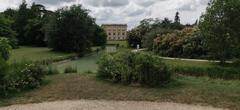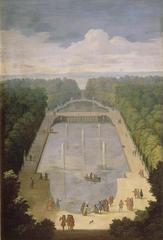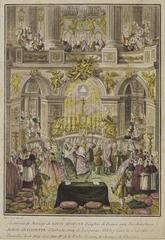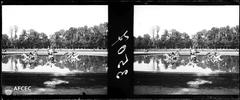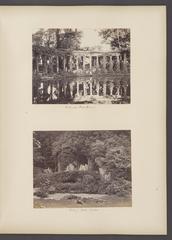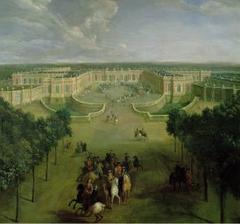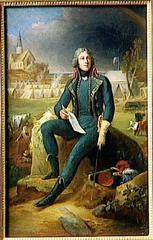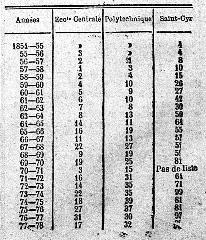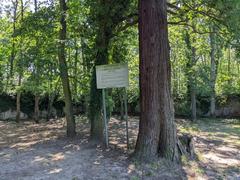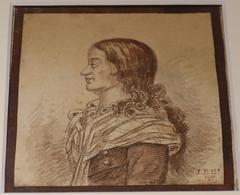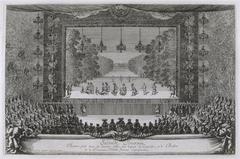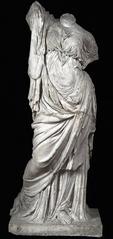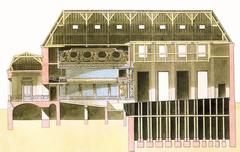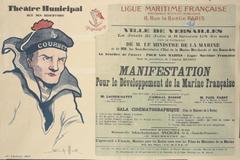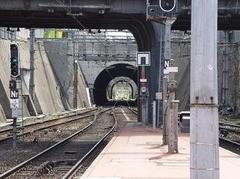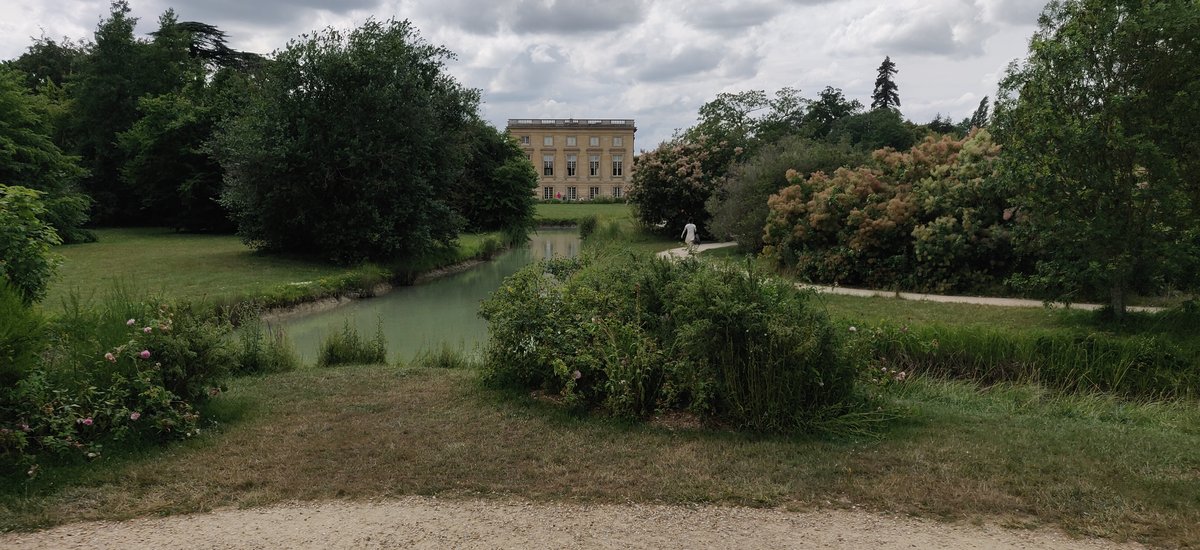
Petit Trianon Visiting Hours, Tickets, and Guide to Versailles Historical Sites
Date: 14/06/2025
Introduction
Nestled within the expansive grounds of the Palace of Versailles, the Petit Trianon stands as a remarkable emblem of 18th-century French neoclassical architecture and royal intimacy. Commissioned by King Louis XV and later beloved by Marie Antoinette, this elegant château provided a private haven away from the rigid protocols of court life. Today, the Petit Trianon offers visitors a chance to experience the artistic innovation, tranquil gardens, and personal world of French royalty. This comprehensive guide details the Petit Trianon’s history, cultural significance, architectural highlights, current visiting hours, ticketing information, accessibility, travel tips, and nearby attractions to help you plan an unforgettable visit.
For the most accurate and up-to-date information, always consult the official Palace of Versailles website and related resources (Château de Versailles, Bienvenue Château de Versailles, New England Parisienne).
Table of Contents
- Introduction
- Origins and Royal Patronage
- Architectural Features and Innovations
- Marie Antoinette’s Era and Cultural Significance
- Role in French History
- Gardens and Outbuildings
- Visiting Hours and Tickets
- Accessibility and Visitor Tips
- Getting There
- Visitor Services & Facilities
- Food, Refreshments, and Best Times to Visit
- Suggested Itinerary
- FAQs
- Conclusion
- Sources
Origins and Royal Patronage
The Petit Trianon was commissioned by King Louis XV in 1758 as a secluded retreat within the Versailles estate, designed by Ange-Jacques Gabriel, the king’s chief architect. Completed in 1768, its original purpose was to serve as a tranquil escape for Louis XV and his close companions, including his influential mistress, Madame de Pompadour. Though Pompadour passed away before its completion, the estate was enjoyed by Madame du Barry, the king’s last mistress (The Good Life France).
In 1774, Louis XVI gifted the Petit Trianon to his young queen, Marie Antoinette. She transformed it into her private sanctuary, seeking relief from the formalities and scrutiny of court life (Travel Pander). This association with Marie Antoinette has made the Petit Trianon a symbol of both royal intimacy and, later, controversy.
Architectural Features and Innovations
The Petit Trianon is a masterpiece of French neoclassical architecture, marking a stylistic shift from the ornate Baroque of the main palace to a purer, more rational aesthetic. Gabriel’s design is notable for its harmonious proportions, symmetry, and minimal ornamentation, reflecting Enlightenment ideals of clarity and order (Lonely Planet).
- Exterior: The cubic, three-storey structure, built with pale limestone, features a grand Ionic portico, clean lines, and balanced facades adorned with pilasters and tympanums (VersaillesChateau.com).
- Interior: The layout centers on a grand staircase with elegant salons and private apartments radiating outward. Delicate stuccowork, floral garlands, and allegorical paintings evoke pastoral themes and the changing seasons (Wikipedia). Custom furniture and light pastel palettes convey refined simplicity and comfort.
Marie Antoinette’s Era and Cultural Significance
Marie Antoinette’s tenure at the Petit Trianon brought significant changes. She commissioned the transformation of the surrounding formal gardens into an English-style landscape, designed to evoke natural beauty and relaxation. The queen also masterminded the creation of the Hameau de la Reine—a rustic model village and farm reflecting her fascination with rural life (Where Are Those Morgans).
At the Petit Trianon, Marie Antoinette hosted private gatherings, informal dinners, and theatrical performances, seeking respite from the ceremonial life of Versailles. While this retreat allowed her personal freedom and artistic expression, it also fueled criticism among the French populace, who saw her seclusion and extravagance as symbols of royal excess (The Glanz).
Role in French History
The outbreak of the French Revolution in 1789 brought an abrupt end to the Petit Trianon’s royal era. The estate was seized and its contents auctioned. Marie Antoinette’s connection to the Petit Trianon contributed to her vilification in revolutionary propaganda (Travel Pander).
In the 19th century, the building was restored and incorporated into the Museum of the History of France. Today, the Petit Trianon is recognized as a vital part of the UNESCO World Heritage-listed Versailles complex (UNESCO).
Gardens and Outbuildings
The Petit Trianon’s gardens evolved from formal French parterres to a picturesque English landscape under Marie Antoinette’s direction. Key features include:
- French and English Gardens: Geometric layouts, winding paths, artificial lakes, and romantic follies blend classical and naturalistic styles (VersaillesChateau.com).
- Temple of Love: A Corinthian rotunda built in 1778, housing a statue of Cupid (WanderingWhyTraveler).
- Queen’s Hamlet: A model village with Normandy-style cottages and a working farm, reflecting Marie Antoinette’s pastoral fantasies.
- Queen’s Theatre: An 18th-century structure used for private performances.
Petit Trianon Visiting Hours and Tickets
-
Opening Hours:
- High Season (April–October): 12:00 pm – 6:30 pm (last admission 5:45 pm)
- Low Season (November–March): Closes at 5:30 pm (last admission 4:45 pm)
- Closed Mondays, May 1st, December 25th, and January 1st (Château de Versailles Practical Information).
- Gardens open daily from 7:00 am and close at 8:30 pm in high season.
-
Tickets:
- Passport Ticket: Full access to the Palace, Estate of Trianon (Grand and Petit Trianon), gardens, and exhibitions.
- Estate of Trianon Ticket: Access to Grand Trianon, Petit Trianon, and Queen’s Hamlet.
- Free Admission: Under 18s, EU residents under 26, people with disabilities and their companions, among others.
Tickets can be purchased online in advance or on site. Advance booking is highly recommended, especially during peak season and special events.
Accessibility and Visitor Tips
- Accessibility: The garden level is accessible to visitors with reduced mobility, with ramps at entrances and adapted toilets. Some upper floors and historic areas may remain inaccessible due to architectural constraints.
- Facilities: Free toilets and baby-changing facilities are available near the Petit Trianon. Drinking fountains are also provided.
- Visitor Tips:
- Visit early or late in the day for a quieter experience.
- Wear comfortable shoes for garden walks.
- Use the official Versailles App for maps, audio guides, and updates.
- Guided tours and audioguides are available in multiple languages.
Getting There
- On Foot: The Petit Trianon is a scenic 20–30 minute walk from the main Palace through beautiful gardens.
- Petit Train: A convenient shuttle running between the Palace, Grand Canal, Grand Trianon, and Petit Trianon. Tickets cost €5 round-trip and are available from the driver.
- Electric Vehicle: Golf carts for rent near the Palace entrance (valid driver’s license required).
- By Car: Paid parking near the Petit Trianon (Queen’s Gate or Saint-Antoine Gate). Free disabled parking with documentation.
Visitor Services & Facilities
- Information Point: Located before the ticket kiosk, staffed with interactive displays and brochures.
- Guided Tours: Specialized tours on Marie Antoinette’s life and the château’s architecture; check the events calendar for availability.
- Accessibility Services: Assistance and adapted tours can be arranged in advance.
- Safety: A public-use defibrillator is available at the Grand Trianon; staff are trained for emergencies.
Food, Refreshments, and Best Times to Visit
- Food: Limited options near the Petit Trianon. Bringing a picnic to enjoy in the gardens is popular and atmospheric. The town of Versailles offers more diverse and affordable eateries.
- Best Visiting Times:
- Spring and fall for fewer crowds and pleasant weather.
- Weekdays and early mornings for the quietest experience.
- The Trianon estate is less crowded than the main palace, making it ideal for a relaxed visit.
Suggested Itinerary
- Morning: Tour the main Palace and gardens.
- Midday: Walk or take the Petit Train to the Trianon estate.
- Afternoon: Explore the Petit Trianon, gardens, and Queen’s Hamlet.
- Departure: Exit via the Saint-Antoine Gate for easy access to transport links.
Frequently Asked Questions (FAQ)
Q: What are the Petit Trianon visiting hours?
A: Open 12:00 pm–6:30 pm (April–October), 12:00 pm–5:30 pm (November–March), closed Mondays and certain holidays. Always check the official website for current information.
Q: Can I buy Petit Trianon tickets online?
A: Yes, tickets can be purchased in advance for both the Passport and Estate of Trianon options.
Q: Is the Petit Trianon accessible to wheelchair users?
A: The garden level is accessible; some upper floors or historic spaces may have limited access.
Q: Are guided tours and audioguides available?
A: Yes, both are available and strongly recommended for a richer understanding.
Q: Can I bring a picnic?
A: Yes, picnicking is permitted in the gardens, but not inside the buildings.
Q: Are pets allowed?
A: Only service animals are allowed inside the estate.
Q: Is photography permitted?
A: Non-flash photography is allowed inside the Petit Trianon.
Conclusion
The Petit Trianon is a jewel within the Versailles estate, blending neoclassical elegance, artistic innovation, and a fascinating royal legacy. Its intimate scale, beautiful gardens, and rich history offer a unique contrast to the grandeur of the main palace. By planning your visit—checking hours, booking tickets in advance, and considering guided tours—you can fully appreciate this iconic site. Whether you’re a history enthusiast, art lover, or curious traveler, the Petit Trianon remains an essential destination for anyone exploring Versailles.
Enhance your visit using the Audiala app for audio tours and up-to-date information, and follow us on social media for continuing tips and inspiration on exploring Versailles and beyond.
Sources
- Petit Trianon Visiting Hours, Tickets, and History: Your Guide to Versailles’ Hidden Gem, 2023, Château de Versailles (https://en.chateauversailles.fr/discover/estate/estate-trianon/petit-trianon)
- Welcome Information Point Petit Trianon, 2023, Bienvenue Château de Versailles (https://bienvenue.chateauversailles.fr/en/trianon-palaces-and-marie-antoinette-s-estate/welcome/419_information-point-petit-trianon)
- Petit Trianon Versailles France, 2023, New England Parisienne (https://newenglandparisienne.com/2023/04/25/petit-trianon-versailles-france/)
- Petit Trianon, 2024, Wikipedia (https://en.wikipedia.org/wiki/Petit_Trianon)
- Guide to the Versailles, 2023, Lonely Planet (https://www.lonelyplanet.com/articles/guide-to-the-versailles)
- Everything You Want to Know About Versailles, 2023, The Good Life France (https://thegoodlifefrance.com/everything-you-want-to-know-about-versailles/)
- How to Visit Palace of Versailles, 2023, Where Are Those Morgans (https://wherearethosemorgans.com/how-to-visit-palace-of-versailles/)
- Petit Trianon Visiting Hours, Tickets & Visitor Guide at Versailles, 2023, Château de Versailles Practical Information (https://en.chateauversailles.fr/plan-your-visit/practical-information)
- 12 Pro Tips for Visiting Versailles, 2023, WanderingWhyTraveler (https://www.wanderingwhytraveler.com/12-pro-tips-for-visiting-versailles/)
- Where is Versailles France Located?, 2023, Travel Pander (https://travelpander.com/where-is-versailles-france-located/)
